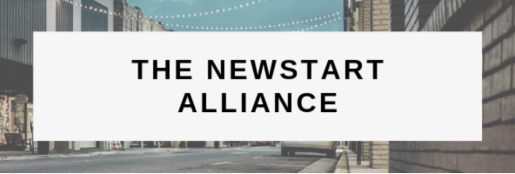
Paying For Your Audience (Isn't a Bad Thing)
Apr. 16, 2021
If you’ve worked in a newspaper newsroom at any point in your career, the following quotes may seem familiar to you:
“We don’t want to be perceived as promoting ourselves.”
“If we ask our readers for money, they won’t trust us.”
I’ll admit, after spending a good amount of time in local TV newsrooms, and then returning to the newspaper world, the distain for self-promotion of any kind at print publications boggled my mind.
Thankfully, the unwillingness to promote stories or asking people to pay for the journalism they read is fading away along with that wall between the business side of publications and newsrooms.
But that simple idea of self-promotion may not be enough for most publications to stay afloat. That’s where the Journalism Growth Lab comes into play.
The Lab started out as a side hustle for Phillip Smith, but is now, well, an actual thing for Smith and Emily Zajac.
What is it? The Journalism Growth Lab focuses on paid acquisition -- the process of growing audiences and finding new subscribers by using online advertising on platforms like Facebook, Google, Twitter and others.
Because I love funnels, I’ll say that it’s a way to get new people into the top of your funnel, or helping move existing folks down the path to a digital subscription or membership.
“This is something I’ve been watching some publishers do for a very long time,” Smith said. “It’s amazing that more haven’t looked into it.”
Some of that has to do with that innate ability in some journalists to avoid promoting themselves. Some of it is the absence of knowledge about social advertising. But it also has to do with that ever-popular duo of “lack of time” and “lack of resources.”
“Moderately well-staffed newsrooms don’t have the time to take this stuff on,” Smith said.
So Smith and Zajac offer up their in-depth knowledge and skillset to do it for them.
What levels of publications are the right size to work with the Growth Lab? As Smith describes it, an outlet like the Philadelphia Inquirer would be too big, while a single founder/owner startup is too small. The smallest organizations Smith works with have about six to 12 people in the newsroom, and the largest have about 50.
Smith said he doesn’t advise paid acquisition for startups, telling them to put in the legwork to build their audience organically.
“Most startups have a natural early momentum from friends and family and word of mouth,” Smith said. But after about six to 12 months, they might run out of steam. That’s when they need to think about how they are going to raise awareness and get more folks into the top of the funnel.
Smith has published a lot of research on paid acquisition — two good examples are here and here in case you want to go in depth on the subject (which you should).
But Smith offered up some simple advice for anyone who wants to dip their toes in the paid acquisition space.
No. 1: Do you homework first and understand how much you can pay for a new newsletter subscriber or a new paid subscriber, member or donor.
“So many publishers come to us and say they ran a campaign for two weeks, and got newsletter subscribers for $2 each, and ask if that’s good,” Smith said.
If you have to ask, that means you didn't put in the effort up front to understand what you can afford.
“Do the homework to know how much you can spend and what a good campaign looks like,” he said.
Here's an example from research Smith did with Lenfest in 2019:

No. 2: Be straightforward with your ad copy, not misleading.
Smith said he’s heard from publishers who have worked with bigger agencies that brought in lots of newsletter subscribers, but the engagement numbers were terrible. In those cases, the agency may have used misleading campaigns, like a personality quiz or survey where people had to give an email address to find out the answers. That’s … not good.
“Just be straight with people,” Smith said. That means tell people what they can expect from you. Make them curious about your content and then deliver.
No. 3: Habit is key.
Don’t just think about acquiring email subscribers. Also think about the folks who have interacted with your publication in the past, and get them to do it again … and again.
In other words, build brand affinity.
“Try to bring people back quickly as a way to make them more aware of the brand or the funnel,” Smith said.
If any of this sounds interesting to you and you’d like more information about what Smith and Zajac are doing, you can check out a few case studies on the Growth Lab site. You also may want to tune in to their podcast via the Journalism Growth Club.
